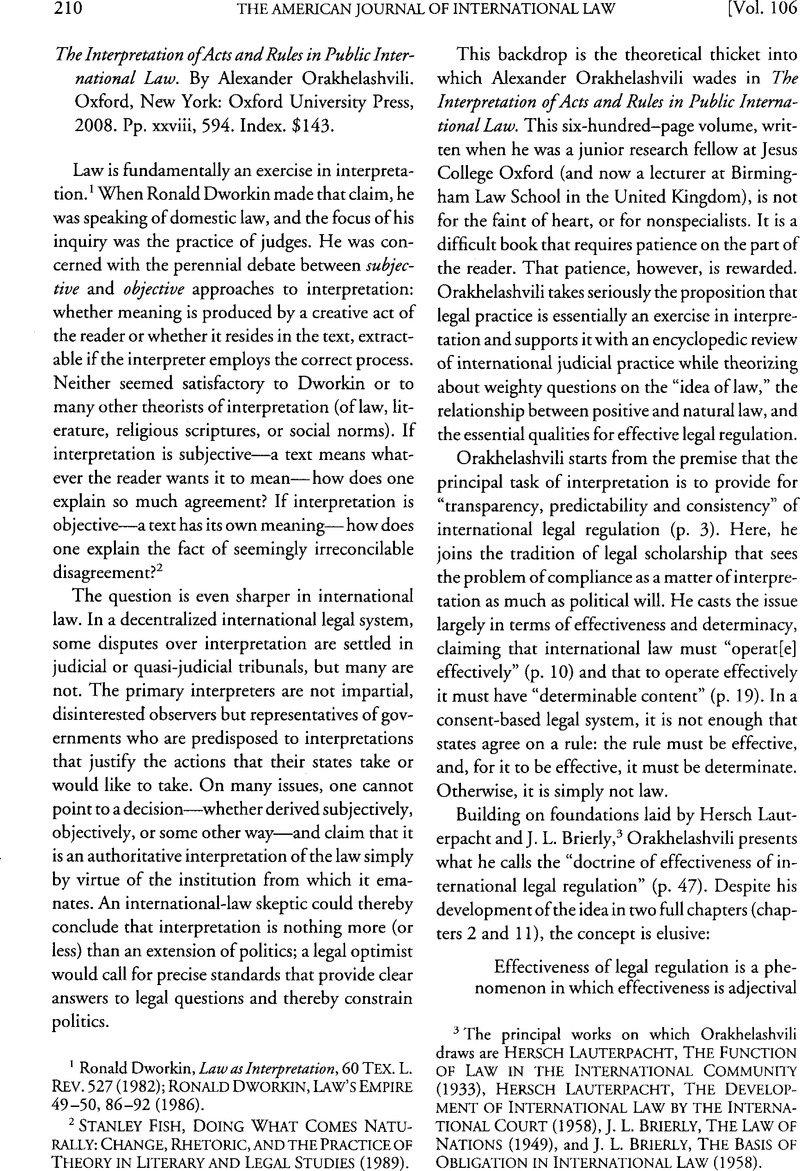No CrossRef data available.
Article contents
The Interpretation of Acts and Rules in Public International Law. By Alexander Orakhelashvili. Oxford, New York: Oxford University Press, 2008. Pp. xxviii, 594. Index. $143.
Published online by Cambridge University Press: 20 January 2017
Abstract

- Type
- Recent Books on International Law
- Information
- Copyright
- Copyright © American Society of International Law 2012
References
1 Dworkin, Ronald, Law as Interpretation, 60 Tex. L. Rev. 527 (1982)Google Scholar; Ronald Dworkin, Law’s Empire 49-50, 86-92 (1986).
2 Stanley Fish, Doing What Comes Naturally: Change, Rhetoric, and the Practice of Theory in Literary and Legal Studies (1989).
3 The principal works on which Orakhelashvili draws are Hersch Lauterpacht, the Function of Law in the International Community (1933), Hersch Lauterpacht, the Development of International Law by the International Court (1958), J. L. Brierly, the Law of Nations (1949), and J. L. Brierly, the Basis of Obligation in International Law (1958).
4 Law’s Empire, supra note 1, at 256.
5 Commitment and Compliance: The Role of Non-Binding Norms in the International Legal System (Dinah Shelton ed., 2000); Legalization and World Politics ( Goldstein, Judith L., Kahler, Miles, Keohane, Robert O. & Slaughter, Anne-Marie eds., 2001)Google Scholar.
6 [Editor’s note: Brunnée and Toope’s recent book, Legitimacy and Legality in International Law: An Interactional Account, is reviewed by Nico Krisch in this issue of the Journals
7 On page 321, Orakhelashvili cites to Johnstone, Ian, Treaty Interpretation: The Authority of Interpretive Communities, 12 Mich. J. Int’l L. 371 (1991)Google Scholar. I have expanded on the idea of interpretive communities in Security Council Deliberations: The Power of the Better Argument, 14 Eur. J. Int’l L. 437 (2003), and most recently, the Power of Deliberation: International Law, Politics and Organizations (2011).
8 Jürgen Habermas, Between Fact and Norms: Contributions to a Discourse Theory of Law and Democracy (William Rehg trans., 1996).
9 See Power of Deliberation, supra note 7, especially chapters 3 and 6.
10 SC Res. 678 (Nov. 29, 1990).
11 SC Res. 687 (Apr. 3,1991).
12 SC Res. 1441 (Nov. 8, 2002).
13 Similarly, his analysis of the Security Council’s determination of what counts as a “threat to the peace” within the meaning of Article 39 of the UN Charter leaves much to be desired (p. 542). He appeals for “objective or objectivised criteria” (p. 541) for making that determination, guided by the test of “reality and genuineness” (p. 547). Does that test really get us any closer to “objective” interpretation of what “threat to peace” means? Who applies the test, and how?


